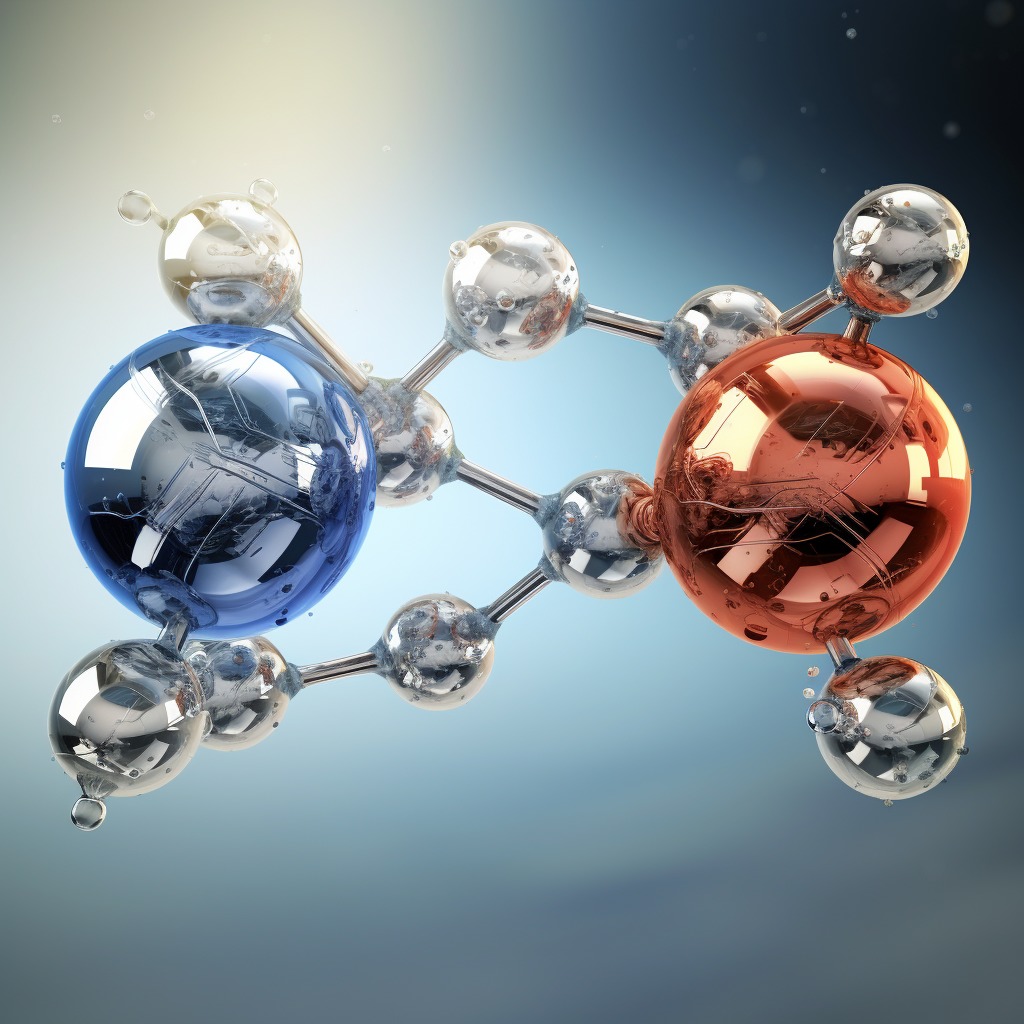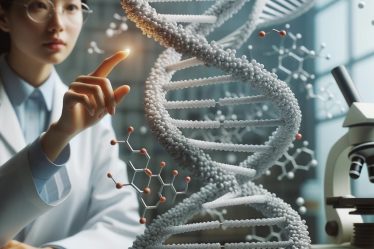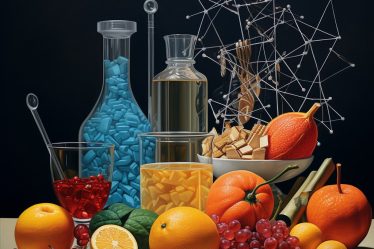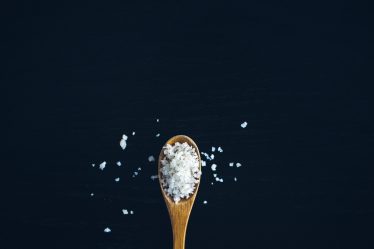
Welcome to the fascinating world of chemistry! Today, we’re exploring the forces that hold the universe together – chemical bonds. Understanding these bonds, particularly ionic and covalent bonds, is like holding the key to the secrets of chemistry. These bonds are the invisible links that connect atoms, forming the molecules and compounds that make up everything around us.
Here’s a glimpse of what you’ll learn:
- The basics of ionic and covalent bonding.
- Ionic vs. covalent bond.
- The importance of tutors in mastering chemistry concepts.
- Useful online resources for learning chemistry.
- Frequently asked questions about ionic and covalent bonds.
- Glossary of terms related to ionic and covalent bonds.
Discover your ideal chemistry tutor at meet’n’learn and skyrocket your understanding to new heights!
Struggling with biology topics? Explore our extensive collection of biology educational blog posts designed to simplify complex concepts for you. Whether it’s photosynthesis, the intricacies of green algae, understanding bacteria and viruses, or delving into the fascinating world of genetics and cells, our resources have got you covered. Expand your knowledge and enhance your learning journey with us today.
What are Chemical Bonds?
Before we dive into the specifics of ionic and covalent bonds, it’s important first to understand what chemical bonds are. A chemical bond is a force of attraction that holds two or more atoms together. This bond is formed when atoms share or transfer electrons to achieve stability.
But why do atoms seek stability? Like how people strive for balance in their lives, atoms aim for balance in their electron configuration. This balance, or stability, is typically achieved when an atom has a full outer shell of electrons.
Types of Chemical Bonds
There are three primary types of chemical bonds – ionic, covalent, and metallic. Each type of bond is characterized by a distinct electron sharing or transfer method, which results in unique properties in the compounds they form. These include:
- Ionic Bonds: Formed when one atom donates an electron to another.
- Covalent Bonds: Formed when two atoms share one or more pairs of electrons.
- Metallic Bonds: Formed when electrons are shared among a lattice of atoms.
In the following sections, we will focus on ionic and covalent bonds, exploring their differences and similarities.
Ionic Bonds
Ionic bonds are fascinating interactions that occur when one atom donates an electron to another. This act of giving and receiving results in forming ions, atoms, or molecules that carry a charge. The resulting bond formed between these ions is ionic.
Ionic bonds typically occur between a metal and a nonmetal. The metal (donor) loses an electron and becomes a positively charged ion known as a cation. On the other hand, the nonmetal gains an electron and becomes a negatively charged ion, known as an anion. The opposite charges of these ions attract each other, forming an ionic bond.
Consider table salt, or sodium chloride (NaCl), as an example. Sodium (a metal) donates its outer electron to chlorine (a nonmetal). This results in a sodium ion (Na+) and a chloride ion (Cl-). The opposite charges of these ions attract each other, forming an ionic bond.
But why does sodium donate an electron to chlorine? It’s all about achieving stability. Sodium has one electron in its outer shell, while chlorine has seven. By donating its outer electron, sodium can achieve a stable electron configuration. Similarly, by gaining an electron, chlorine can also achieve stability.
How is a Hydrogen Bond Formed?
Ionic compounds like sodium chloride have several distinctive properties:
Key Characteristics of Ionic Compounds
- Form Crystalline Solids: Ionic compounds often form crystalline solids at room temperature. This is because of the strong electrostatic forces between the positive and negative ions, which arrange themselves in a repeating pattern to form a crystal lattice.
- High Melting and Boiling Points: Due to the strong forces of attraction between the ions, ionic compounds have high melting and boiling points.
- Conduct Electricity: When dissolved in water or melted, ionic compounds can conduct electricity. This is because the ions are free to move and carry electrical charge.
- Soluble in Water: Many ionic compounds are soluble in water. When dissolved, they dissociate into their ions.
In the next chapter, we’ll explore covalent bonds, where atoms prefer to share rather than donate or receive electrons.
Covalent Bonds
Now, let’s shift our focus to covalent bonds. Unlike ionic bonds, where one atom donates an electron to another, covalent bonds involve the sharing of electrons between atoms. This sharing allows both atoms to achieve a stable electron configuration, forming a covalent bond.
Covalent bonds typically occur between nonmetal atoms. These atoms have similar electronegativities, meaning they have a similar ability to attract electrons. Because of this, neither atom can donate or accept an electron from the other. Instead, they compromise by sharing one or more pairs of electrons.
Consider water (H2O) as an example. Each hydrogen atom shares its single electron with the oxygen atom, and the oxygen atom shares one of its electrons with each hydrogen atom. This sharing of electrons allows all three atoms to achieve a stable electron configuration, forming a covalent bond.
But why do atoms share electrons? Again, it’s all about achieving stability. Each atom can fill its outer shell by sharing electrons, achieving a stable electron configuration. This desire for stability is a driving force behind the formation of covalent bonds.
How is a Covalent Bond Formed?
Covalent compounds like water have several distinctive properties. Here are some key characteristics:
Key Characteristics of Covalent Compounds
- Varying States of Matter: At room temperature, covalent compounds can exist as gases, liquids, or non-crystalline solids. This contrasts with ionic compounds, which are usually crystalline solids.
- Lower Melting and Boiling Points: Covalent compounds generally have lower melting and boiling points than ionic compounds. This is because the forces of attraction between molecules in a covalent compound are generally weaker than the ionic bonds in an ionic compound.
- Non-Conductive: Most covalent compounds do not conduct electricity. This is because they do not contain ions, which are the charge carriers in ionic compounds.
- Insoluble or Partially Soluble in Water: Many covalent compounds are insoluble or partially soluble in water. Those that are soluble do not dissociate into ions when dissolved.
Understanding covalent bonds is just as crucial as understanding ionic bonds. In the next chapter, we’ll compare ionic and covalent bonds, highlighting their key differences.
How to calculate the Concentration of a Solution?
Ionic vs. Covalent Bonds
Now that we’ve explored both ionic and covalent bonds, it’s time to compare these two types of bonds. While they both aim to achieve stability for atoms, they do so in fundamentally different ways, leading to different properties in the resulting compounds.
Formation and Characteristics
In ionic bonds, one atom donates an electron to another, leading to the formation of positively and negatively charged ions. These ions attract each other due to their opposite charges, forming an ionic bond. Ionic compounds like sodium chloride are often crystalline solids with high melting and boiling points. They can conduct electricity when dissolved in water or melted, as the ions can move and carry a charge.
In contrast, covalent bonds involve the sharing of electrons between atoms. This sharing allows all atoms involved to achieve a stable electron configuration. Covalent compounds like water can exist as gases, liquids, or non-crystalline solids at room temperature. They generally have lower melting and boiling points than ionic compounds, and most do not conduct electricity as they do not contain ions.
What are Hydroxides?
Ionic vs. Covalent Bonds: Comparison of Properties
We can observe clear differences in their properties when comparing ionic and covalent compounds. These differences are due to the nature of the bonds that hold the atoms together in these compounds.
For instance, ionic compounds are usually solid at room temperature and form crystal lattice structures. This is due to the strong electrostatic forces of attraction between the positive and negative ions in the compound. On the other hand, covalent compounds can be either solid, liquid, or gas at room temperature. This is because the forces of attraction between the molecules in a covalent compound are generally weaker.
Another key difference is their conductivity. Ionic compounds can conduct electricity when dissolved in water or melted because they break into ions that are free to move. In contrast, most covalent compounds do not conduct electricity as they do not break up into ions.
How to calculate Molar Mass and Mass Fraction?
Ionic vs. Covalent Bond: Summary of Differences
Here’s a summary of the key differences between ionic and covalent bonds:
| Ionic Bonds | Covalent Bonds | |
|---|---|---|
| Formation | Formed by the transfer of electrons from one atom to another | Formed by the sharing of electrons between atoms |
| Type of Substance | Usually form crystalline solids | Can exist as gases, liquids, or non-crystalline solids |
| Melting and Boiling Points | High melting and boiling points | Lower melting and boiling points |
| Conductivity | Can conduct electricity when dissolved in water or melted | Most do not conduct electricity |
The Role of Tutors in Learning Chemistry
Chemistry, with its myriad concepts and principles, can sometimes be challenging for students. This is where the role of tutors becomes invaluable. Tutors can provide personalized learning experiences and help students understand complex concepts like ionic and covalent bonds.
- Personalized Learning: Tutors adapt their teaching methods to suit each student’s learning style, making learning more effective and enjoyable.
- Clarifying Complex Concepts: Tutors simplify complex concepts, like the difference between ionic and covalent bonds, using analogies, real-life examples, and clear explanations.
- Providing Additional Resources: Tutors supplement classroom learning with additional resources like practice questions, revision notes, and educational videos.
Looking for a chemistry tutor? Enter “chemistry tutor Glasgow” or “chemistry teacher Sheffield” on your preferred tutoring platform, such as meet’n’learn to find a teacher who can meet your specific needs.
If you thrive in group learning environments, search “chemistry classes London” or “chemistry lessons Manchester” online to discover local schools offering chemistry lessons.
Ethanol and Alcohols in Chemistry explained.
Online Resources for Learning Chemistry
In today’s digital age, numerous online resources can supplement classroom learning and tutoring sessions. These resources can provide additional explanations, practice questions, and interactive learning experiences to help students understand complex chemistry concepts like ionic and covalent bonds.
- Interactive Learning Websites: Platforms like Khan Academy and Coursera provide interactive lessons and courses on various chemistry topics, using videos, quizzes, and practice exercises to make learning engaging.
- Educational YouTube Channels: Channels such as CrashCourse and TED-Ed offer short, informative videos on various chemistry topics, providing visual explanations and real-life examples.
- Chemistry Forums and Q&A Websites: Forums like Chemistry Stack Exchange and websites like Quora allow students to ask questions and get answers from experts and fellow learners, providing personalized help and diverse perspectives.
Explore Acids, Bases, and pH.
One Last Dive into Ionic and Covalent Bond
Understanding the differences between ionic and covalent bonds is a fundamental aspect of learning chemistry. These bonds, formed by transferring or sharing electrons between atoms, are the building blocks of the compounds that make up the world around us. These bonds are at work, from the salt we use in our food to the water we drink.
Learning about these bonds can be challenging, but with the right resources and guidance, it can also be an exciting journey of discovery. Tutors can provide personalized learning experiences and clarify complex concepts, while online resources offer additional explanations and practice opportunities. Remember, understanding comes with time and practice. Happy learning!
Introduction to Redox Reactions.
FAQs: Common Questions About the Ionic vs. Covalent Bond
1. What is the key difference between ionic and covalent bonds?
Ionic bonds involve the transfer of electrons from one atom to another, creating charged ions that attract each other. Covalent bonds, however, involve the sharing of electrons between atoms.
2. Can a compound have both ionic and covalent bonds?
Yes, a compound can contain both ionic and covalent bonds. For example, in Sodium Bicarbonate (NaHCO3), the bond between Sodium (Na) and Bicarbonate (HCO3) is ionic, while the bonds within the Bicarbonate ion are covalent.3. Why do ionic compounds conduct electricity when dissolved in water?
Ionic compounds conduct electricity in water as they dissociate into free-moving ions that carry an electrical charge, forming an electric current.
4. Why do covalent compounds generally have lower melting and boiling points than ionic compounds?
Covalent compounds have lower melting and boiling points than ionic ones due to weaker intermolecular forces, requiring less energy to break.
Complete Chemistry Glossary: Ionic vs. Covalent Bond
- Atom: The smallest unit of a chemical element that retains the properties of that element.
- Electron: A subatomic particle with a negative electric charge.
- Ionic Bond: A type of chemical bond formed through the electrostatic attraction between oppositely charged ions.
- Covalent Bond: A chemical bond that involves the sharing of electron pairs between atoms.
- Cation: A positively charged ion, typically a metal, that has lost one or more electrons.
- Anion: A negatively charged ion, typically a nonmetal, that has gained one or more electrons.
- Electronegativity: A measure of the tendency of an atom to attract a bonding pair of electrons.
Discover your ideal chemistry tutor at meet’n’learn and skyrocket your understanding to new heights!


